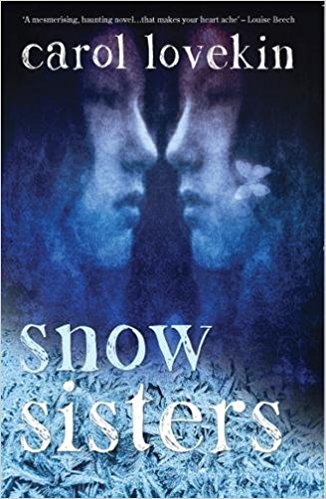 At the end of a narrow lane in the heart of the welsh countryside lies Gull House. A tall Victorian house built originally for a wealthy local, in recent times it has belonged to the Pryce family, of whom the remaining members are Verity and Meredith. The sisters grew up in Gull House until the year Allegra, their tempestuous, perpetual happiness chasing mother, forced them all to leave; the same year Meredith inadvertently released a ghost. Now, after the death of her beloved grandmother, Verity has returned to confront her inheritance. But there’s someone missing, someone who should be by her side: Meredith.
At the end of a narrow lane in the heart of the welsh countryside lies Gull House. A tall Victorian house built originally for a wealthy local, in recent times it has belonged to the Pryce family, of whom the remaining members are Verity and Meredith. The sisters grew up in Gull House until the year Allegra, their tempestuous, perpetual happiness chasing mother, forced them all to leave; the same year Meredith inadvertently released a ghost. Now, after the death of her beloved grandmother, Verity has returned to confront her inheritance. But there’s someone missing, someone who should be by her side: Meredith.
Lovekin’s debut, Ghostbird, was a ghostly tale of family, love and magic, influenced by Welsh folklore, particularly the stories of the Mabinogion. Snow Sisters explores similar themes but borrows more from the Victorian Gothic/fairy-tale genres. This is apparent from when we’re first introduced to Gull House: a “tall Victorian” house – tilted slightly from constant buffeting from “wild, sea-born winds” and the cries of gulls echoing overhead, the haughty “ash-coloured galleons” that give the house its name – built from “weathered stone the colour of storms” and oak beams that still remembered “where they once grew”, with an architectural folly known as “Rapunzel’s tower” and “twisted blue ropes” of wisteria hanging over the garden wall. ‘Rapunzel’ initially conjures the atmosphere of a fairy tale, but, like the Lady of Shalott, towers can also be used as a means of confinement – women trapped and isolated by circumstances or otherwise. Verity then points out that, in Japanese culture, wisteria (known as the wisteria maiden) is a symbol for unrequited love and was known to Victorians as the ‘clinging tree.’ And so, our themes are set up: ghosts of the past ghosts (real & figurative) clinging to the present. Our ghost is Angharad, released by Meredith from an antique sewing box full of red flannel hearts. She has a tale to tell and she will be listened to.
Unlike the more chronologically linear narrative of Ghostbird, Snow Sisters employs not only multiple narrative viewpoints to switch between but also multiple timelines: Verity returning to the house in the present day, various characters in the past & Angharad recounting her own story. This gives the story a different dynamic where, instead of reading on to find answers to our questions, we know some partial answers and the impetus is to find out how we got there. As ever, Lovekin’s writing is beautiful and her characters are well drawn. She doesn’t worry about making them ‘likable’ or ‘sympathetic’, just real. Allegra for instance, the girls’ mother, is maddeningly irritating – a spoilt woman child who is always chasing down love and who has no self-awareness or sense of irony, but she’s a good character because she provides contrast, conflict and because her traits are recognisable. Angharad’s tale adds a note of genuine tragedy, elevating the book above mere ghost story, and you realise that one of the lingering ghosts are the historical attitudes towards women: as a Victorian woman, even one from a good family, Angharad has little autonomy and is completely at the mercy (or lack of) of those surrounding her, people who often prioritize appearances and their own selfish desires above another’s wellbeing, and the degradations she suffers are far more terrifying than her later ghostly visitations (though those are beautifully creepy and understated). It must never be forgotten that the amount of time women have had (mostly) equal rights pales in comparison to the thousands of years before that where women were essentially second-class citizens. And there are still places around the world today where that is still the case.
Sisterly love, magic and ghostly hauntings, Snow Sisters is perfect for when the skies begin to turn stormy or for when the snow is falling, and all is soft and quiet, where a whisper in the dark might be heard.
Snow Sisters is available now from Honno.










